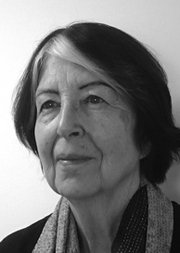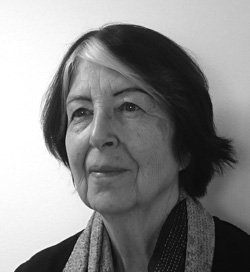
Published in British Academy Review, No. 32 (Spring 2018).
The print version of this article can be downloaded as a PDF file.
Dawn Ades is Professor Emerita of Art History and Theory at the University of Essex. She was elected a Fellow of the British Academy in 1996.
Were you always destined to be an art historian?
No, not at all. I wasn’t aware of such a possibility when I was a teenager. At one point, I was torn between going to university and going to art school, because I did have ambitions as an artist. But I got a place at Oxford to read English. I carried on painting and drawing while I was there, but only a little.
I had always been interested in painting – had always been visiting galleries and looking at exhibitions. But it was at Oxford that I realised that there was such a thing as history of art. I went to a series of lectures by the great art historian Edgar Wind, one of the scholars who came to this country from Germany in the 1930s. I shall never forget a lecture he gave on Michelangelo and Savonarola. I found totally enthralling the idea that there was a crucial relationship between the ideas and writings of the time, and the images that were produced.
I decided to go to the Courtauld and do an MA in history of art. My topic would be satire in the 18th century, which I thought would allow me to look at that relationship between writing and images, the verbal and the visual.
When did your interest move to more modern art?
Nowadays people are much more aware of contemporary art; it is much more part of their experiences. In the early 1960s, what was happening in the contemporary art world was quite a mysterious thing. The Courtauld was basically historical, but we had two very wonderful tutors in the 20th-century period: John Golding, who was also a painter [note 1], and Alan Bowness, who subsequently became director of the Tate. I started a course on 20th-century art because I wanted to understand what was going on: I found cubism very puzzling.
My first idea for a PhD was one on Jackson Pollock, who had died in 1956. But the view of the Courtauld was that that was too recent; it was not nearly removed enough. So I decided to work on the dada and surrealist reviews, looking at the relationship between word and image.
You have met several people who had been involved in surrealism.
From when I was starting out in the late 1960s, into the ’70s, many of those people were still alive, so I wanted to go and talk to them. It was really important to me to hear authentic voices talking about their work and their life, and how that related to surrealism.
However, the way artists regard their own work is very often unexpected. For example, Man Ray was wonderful, but he was not at all interested in talking about photography or film. He was only interested in the recent paintings that he had done. This was around 1968-69. He only wanted to show me his recent paintings, in which he was using a curious technique called decalcomania – which actually is very surrealist. He thought that was the most important thing he had done. I would not say that, but the fact that he thought so is important.
Obviously you have to feel your way carefully in your study. You must not be uncritical, and you have to see the wider context. But I think that eliminating the individual artist altogether is a mistake. I am positioned somewhere between those who completely condemn biography and say it all has to be about the work or the theme, and those who really pursue a biographical approach.
I believe you also met Francis Bacon.
That was great, because we really got on very well. I was writing an essay for the catalogue of his Tate retrospective exhibition in 1985. I happened to have been working on a magazine called Documents, a dissident surrealist review which came out in the late 1920s and early 1930s, largely edited by Georges Bataille. Some of the ideas in it, which were very materialist and very anti-idealist, struck me as having a resonance with Francis’s paintings. I mentioned this to him, and he agreed. That was interesting, and it helped me to write about his paintings very directly. One side of me is quite theoretical and interested in conceptual art, but I do like writing about painting and getting up to the elbows in oil paint.
Is that the artist in you sneaking out?
It probably is something about valuing the way the eye works in relation to the brain. What really surprised me when I started teaching was the extent to which people saw things differently: it never occurred to me that they would not read a painting the same way I saw it. I showed work to my students and they all noticed completely different things in it, so that was a very good lesson. You realise that you have to trust your own eye, but also realise that it is not the only way of reading a picture.
Can you talk a bit about your interest in Latin American art?
At the University of Essex, one of the important Area Studies degrees was in Latin America. Each department within the School of Comparative Studies had to offer courses on that from within their discipline. As I spoke Spanish, and happened to have been to Mexico (where I had quite fallen in love with the Mexican muralists), I was the one who developed courses in Latin American art. This was in the early days of art history departments springing up in the new universities in the 1960s – UEA, Kent, Warwick, ourselves at Essex – and art history was regarded as a discipline that needed to be brought more into the core curriculum, so that was very interesting.
It was very exciting for somebody still doing their PhD to be told they could teach almost what they liked as long as it was to do with Latin America. In my first course, around 1970 or 1971, I taught pre-Columbian, colonial and modern art all in one year, which of course was impossible really. However, the students were amazing.
Later, more specifically, you studied surrealism in Latin America, which you thought of as under-researched. In your British Academy Lecture in 2009 [note 2], you said that surrealism in Latin America is a subject ‘peppered with lacunae, misunderstandings and bad faith’.
One problem with surrealism in Latin America was that there were very few contacts between people in different places. There were surrealists in Chile, there were surrealists in Argentina, there were surrealist exiles in Mexico.
There was also the question of the relationship between surrealism and magical realism, which cropped up in the 1970s. Alejo Carpentier, who wrote what could be called magical realist novels, was very against surrealism. He said that surrealism encouraged people to substitute dream for the reality, whereas Latin American reality was so fantastic that nothing else was needed.
This split between surrealism and magic realism turned people against surrealism. For example, there has been controversy over Frida Kahlo, who at one point was definitely a surrealist and included among the surrealists, but who later said that she had never been one. So people latched onto that and said, ‘You see, she was appropriated by the surrealists. She was really Mexican’. It is a game with names, which is a bit crazy.
You have had a particular interest in Salvador Dalí and Marcel Duchamp. And you brought them together in the recent Dalí/Duchamp exhibition at the Royal Academy [note 3].
I had written quite a lot about both artists previously – Dalí in particular. That goes back to going to see him in Spain. Being a student and not knowing any better, I went and knocked on his door. I had a couple of days of really interesting conversations with him in his studio. He was amused by the fact that I was this young English girl writing a thesis about surrealism, who had never heard of Georges Bataille. So he lectured me about surrealism and Bataille: ‘You’ve got to read Bataille. Bataille is an absolutely key person here.’ He was very serious. He was completely different in the studio from his persona as a showman. He was very friendly, helpful, hugely intelligent and very knowledgeable – a wonderful guide to what I was beginning to study.
At some point after that, I found myself defending Dalí in a conversation with one of the editors at Thames & Hudson. Dalí did not have any defenders at the time in either the academic world or the art world. He was absolutely persona non grata. This was partly because he stayed in Spain during the Franco period. But it was also because he was not a modern artist – rather, he was revising Renaissance techniques. He was regarded as a traitor both politically and aesthetically. I was arguing that one needed to have a more balanced view of him, so they said, ‘OK, write a book about him’ – so I did [note 4].
I was also totally fascinated by Duchamp. I became interested in him when I taught about him for a term at Camberwell School of Arts in 1968. He died that autumn, in October 1968. The fact that he had actually still been working as an artist, not having told anyone for the last 30 years, was a bit of a shock to those who had assumed he had given up art altogether and turned to chess.
In your 1995 Aspects of Art Lecture [note 5], you said, ‘Duchamp’s influence is now so endemic that much 20th century art seems like a footnote to him.’
I still think that – even more now. He has been hugely influential. Duchamp’s ‘readymades’ showed that you can take something out of the ordinary world, and turn it into something else, give it a different thought and create a new life for it. Look at much of the art that is around at the moment. It is using ready-made things, chosen things, found things from the street. This is a shift into a conceptual mode, where the idea is more important than the object, or the idea is materialised so that the conceptual becomes material. There are other sources for this as well, but Duchamp is the key one – as I tried to illustrate in the recent Royal Academy exhibition.
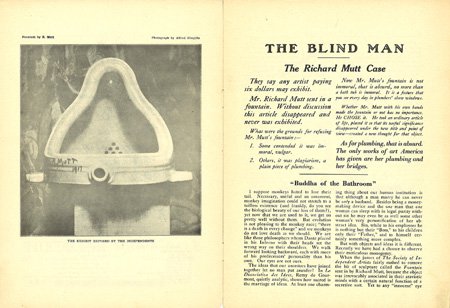
Marcel Duchamp’s ‘Fountain’ is perhaps the most iconic of his ‘readymades’. He arranged for a porcelain urinal with the pseudonym R. Mutt to be submitted to the first Independents Exhibition in New York in 1917. When the object was refused by the committee, he retrieved it and took it to be photographed by Alfred Steiglitz for the second (and final) issue of ‘The Blind Man’, the magazine Duchamp produced with his friends Henri-Pierre Roché and Beatrice Wood. At this stage Duchamp’s identity as perpetrator was still not publicly known; the article expressing outrage at Fountain’s rejection, ‘The Richard Mutt Case’, unsigned, was the only published justification of the readymade: ‘Whether Mr. Mutt with his own hands made the fountain or not has no importance. He CHOSE it.’
In that Royal Academy exhibition, you assembled an extraordinarily impressive range of materials – posters, magazines, found objects, film and photography, as well as paintings and installations.
I wanted to have all the possible mediums in which they worked. In many cases, Duchamp actually invented new mediums. And I wanted all the different kinds of materials to be treated with the same degree of attention. The Royal Academy was very responsive to that, and did a great job.
Talk a bit about how an exhibition like that comes about. First of all, what is the interplay between scholarship and exhibition? An exhibition is obviously an opportunity to communicate scholarship, but presumably it is also an occasion to conduct scholarship.
Ideally, an exhibition is not just applying something you have been researching elsewhere; it should also provide the opportunity to do new research which will inform the exhibition. So the exhibition itself will make a new contribution.
There is a perceived divide between the museum art historian and the academic art historian working in a university. This may be slightly exaggerated, but it does exist. On the whole, the museum art historian has more to do with the material object itself, whereas the academic art historian has increasingly been turning towards theory of art, aesthetics and rather away from the object. I have been keen to retain my interest in the objects themselves. I have been extraordinarily fortunate in my career to be involved in several major exhibitions, quite often working as the outside curator for an institution like the Hayward Gallery or the Tate, where there would be an internal curator too. As an academic, I have had more opportunity to do research than the museum staff, who tend to have less time to follow up their own ideas. The whole curating world has changed since I started in art history. To my mind, being a curator is attendant upon having a scholarly interest in a particular area of art; it is not an activity independent of that – but that is a controversial view.
The first exhibition I was involved in was Dada and Surrealism Reviewed in 1978, as a very junior member of the team. I have been involved in many others since. Sometimes I have had the good luck to propose an exhibition that has been accepted; sometimes I have been invited to work on an exhibition.
The Dalí/Duchamp exhibition was definitely one that I wanted to do, and I have been developing it for 10 or 15 years, with the Salvador Dalí Museum in St. Petersburg, Florida. I genuinely believe it is an important exhibition in terms of what is going on now in contemporary art. Dalí and Duchamp both have a particular reputation, and people have prejudices for and against them, within and outside the art world. That is important, so we need to understand it.
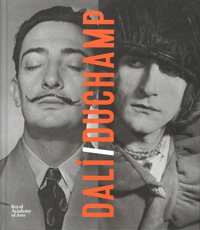
The Dalí/Duchamp exhibition was held at the Royal Academy, in late 2017. The photograph of Salvador Dalí is by Horst P. Horst (1943). The photograph of Marcel Duchamp (as Rrose Sélavy) is by Man Ray (1921).
In the shaping of an exhibition, you obviously have your concept, but you also have to assemble the materials to make it a reality.
Exhibitions are complicated things, and a lot depends on the host institution. Ideally, the host institution has a collection that you can use to bargain with. The Royal Academy does, though not in this area of art.
For a long time, this exhibition did not have a home. Tim Marlow, artistic director of the Royal Academy, happened to ask me what I was working on. I said that I was working on a Dalí/Duchamp exhibition, and that, while there was a home for it in the United States, it didn’t yet have one in Europe. He said, ‘We’ll do it.’
That gave us nearly three years lead in for the exhibition. That is when the loan request lists have to be drawn up. That is when you start visiting all the places that have works that you want to borrow. It is a lengthy process. You write the loan letter, explaining why you need exactly that precise work because, without it, the whole argument of the exhibition will collapse. In the Dalí/Duchamp exhibition, there was no fat: everything had a role to play. Then you start the negotiations. You have a rough idea of how successful you are going to be. For some exhibitions, you assume you will only get 60 per cent of the works that you have asked for. Sometimes you get nearer 100 per cent. We were incredibly lucky with Dalí/Duchamp, we got pretty much everything – it was wonderful.
We got the 1936 Bottle Rack, which is as near to an original Duchamp readymade as you can get. It belongs to someone within the surrealists’ milieu. He said, ‘I will only lend it to you if you (a) have it outside a case, and (b) hang it from the ceiling.’ That was an unusual and wonderful thing for an owner of a major work to say.
Were you pleased with the way the Dalí/Duchamp exhibition came out?
I was extremely pleased.
It was arranged thematically rather than chronologically. One room set the scene, establishing when, where and how they met, and their early experiences in relation to the current major movements in modern art, with which they both fell out for one reason or another.
Then there was a room on eroticism and the object. I hope that brought the readymade into a slightly different relationship with its successors and the notion of the body.
In the third room, which was the most difficult, I wanted to address their mutual and slightly different interest in science and religion. Duchamp was less interested in religion, but was always aware of the possible uses of Christian iconography; Dalí of course wanted to be a believer and was not. But they were also both extremely interested in science. In different ways, Darwin, Einstein, Freud and Marx were all fascinated by invisible powers, things that you cannot see on the surface, and I was interested in how the question of representing invisible things impacted on these two artists in the 20th century. I also looked at very practical aspects like the way they both used perspective, the way they were interested in systems of measurement and optical illusions. I tried to bring all these things together in one room.
What the Royal Academy exhibition revealed was the great friendship between Salvador Dalí and Marcel Duchamp.
It is fascinating, and it is something that Duchamp’s followers in the late 1950s and ’60s found extremely difficult to understand – they thought it was really weird. John Cage would turn up in Cadaques and Duchamp would say, ‘Come and have dinner with Dalí’; and Cage would say, ‘No, I don’t want to meet him.’ There was this great prejudice against Dalí.
But it was a real friendship between them. They were both extremely individualist and very sceptical of the world, and neither was prepared to commit to any group or movement. Both had a great sense of humour, and both were very interested in the erotic. So they had things that brought them together, and Duchamp defended Dalí against various attacks by the surrealists.
Also, Duchamp wasn’t bothered about Franco. Other people would not go to Spain in the 1950s – Picasso refused to set foot in Spain until Franco had gone. But Duchamp blithely went there for his summers, from 1958 to 1968. He was just not prepared to allow anything that he regarded as external to his concerns to influence what he did.
The British Academy has its own collection of artworks adorning its premises in Carlton House Terrace. You have been on the Academy’s Pictures Committee since 2003, and have chaired it since 2012. How do you select pieces to fit a working building with 19th- and early 20th-century interiors?
Thanks to one member of our Pictures Committee, Peter Funnell of the National Portrait Gallery, we have borrowed some major portraits like Jeremy Bentham and Nelson, for the Council Room. This involved a degree of expense, because we had to pay to have some conservation work and glazing done before they could be loaned to us for hanging in a busy function room.
Our overall approach is to show work by British artists. Many of the pieces that you see on the walls are generous loans from artists. Some, like Liz Rideal, Alison Wilding and Phil Allen, are artists who have previously benefited from the scholarships at the British School at Rome – which is one of the Academy-supported British International Research Institutes.
We have also benefited from bequests, in particular the wonderful collection of post-war abstract British art assembled by Ray Pahl, a former Fellow of the British Academy. That bequest gave a great boost to the whole notion of the Academy having its own art collection.
We have only a small acquisition budget, which does not really allow us to acquire anything more than prints. My predecessor in this role, Professor Michael Kauffman FBA, a former Director of the Courtauld, had also been head of prints at the V&A, so was able to bring his knowledge of print-making by British artists such as Joe Tilson, Bernard Cohen, Albert Irvin and Michael Craig Martin.
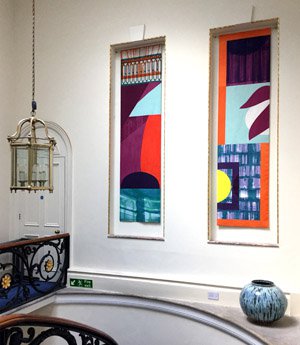
We want to keep the collection varied. And we also want to include different mediums, in particular pottery and textiles. Thanks to Sir Nicholas Goodison, a member of the committee, we now have a dazzling collection of ceramics. And for the alcoves over the staircase in No. 11 Carlton House Terrace, we recently commissioned from Michelle House two marvellous new wall hangings, which cleverly reference the architectural details.
Dawn Ades was interviewed by James Rivington.
1. John Golding (1929-2012) was both a Fellow of the British Academy (elected 1994) and a Royal Academician.
2. Dawn Ades, ‘Surrealism and its Legacies in Latin America’ (British Academy Lecture 2009), Proceedings of the British Academy, 167, 393-422.
3. The Dalí/Duchamp exhibition was held at the Royal Academy, 7 October 2017 - 3 January 2018.
4. Dawn Ades, Salvador Dalí (1982; revised edition 1990).
5. Dawn Ades, ‘Marcel Duchamp and the Paradox of Modernity’ (Aspects of Art Lecture 1995), Proceedings of the British Academy, 90, 129-145.
How are we doing? Your feedback is important to help us shape future issues of the British Academy Review.
To provide reader feedback, please visit www.britishacademy.ac.uk/british-academy-review-feedback
